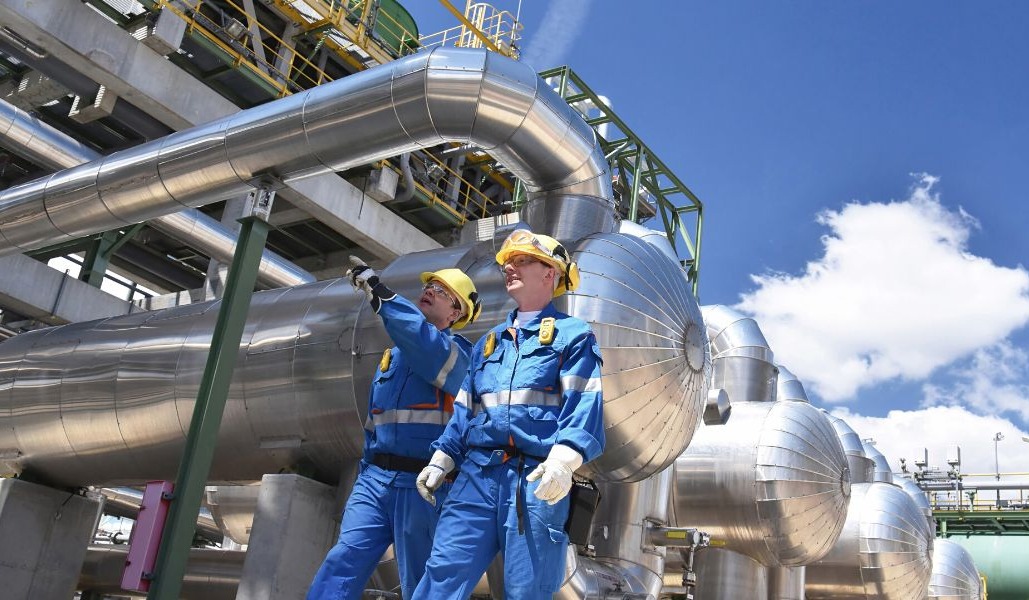4 min read
Carbon Capture and Storage (CCS): A Strategy in Combating Climate Change
Stonewall Engineering
Jun 15, 2023
As the fight against climate change intensifies, Carbon Capture and Storage (CCS) is emerging as a pivotal tool. This game-changing technology, designed to reduce greenhouse gas emissions, holds great promise for our sustainable future. In this blog post, we demystify CCS, exploring its functioning, safety, usage, developments, and the exciting field of carbon capture engineering.
Let's dive in and discover how CCS is shaping our path towards environmental sustainability.
What is Carbon Capture and Storage?
Carbon capture and storage (CCS) is a technology designed to significantly reduce greenhouse gas emissions in the energy sector. This is achieved by 'capturing' carbon dioxide (CO2) emissions from industrial and energy-related sources, 'transporting' this captured CO2 (often by pipeline), and then 'storing' it deep underground where it cannot escape into the atmosphere. The goal is to prevent the CO2 generated by human activities from reaching the atmosphere and contributing to global warming.
CCS stands for Carbon Capture and Storage, as mentioned above. It's an approach that is being increasingly relied upon as we strive towards carbon neutrality - the balance between emitting carbon and absorbing carbon from the atmosphere. Within the CCS process, CO2 is captured at its source—think coal or natural gas plants—and is then injected and stored in geological formations, often several kilometers below the earth's surface.
How can CCS Help Prevent Global Warming and Align with ESG Goals?
The link between CCS and the prevention of global warming is straightforward: by reducing the amount of CO2 released into our atmosphere, global warming can be mitigated. CO2 is a potent greenhouse gas, and its rising concentration in the atmosphere traps heat, causing the Earth's temperature to rise.
In line with the Environmental pillar of Environmental, Social, and Governance (ESG) principles, CCS directly addresses the urgent need for effective measures to reduce greenhouse gas emissions. Companies adopting CCS technologies showcase their commitment to environmental stewardship and the reduction of their carbon footprint.
Beyond this, the implementation of CCS also contributes positively to the Governance aspect of ESG. It highlights an organization's proactive approach in adhering to regulations and standards related to carbon emissions. It also underscores their commitment to risk management, particularly concerning environmental risks.
So, by capturing and storing CO2 before it reaches the atmosphere, CCS is not only a powerful tool in combating climate change but also an effective strategy for businesses to demonstrate their dedication to ESG principles. By making these substantial and tangible efforts towards environmental sustainability, organizations are better placed to gain trust from stakeholders, boost their corporate image, and ensure their operations are sustainable for the long term.
How Does CCS Actually Work?
CCS begins at the emission source. The CO2 is captured directly from the exhaust gases of industrial processes by using a variety of methods. These methods often involve solvent-based carbon dioxide scrubbing processes. The CO2 is then compressed and transported, typically via pipelines, to a suitable storage site.
Storage sites are carefully chosen geological formations that can effectively contain CO2. These are usually depleted oil and gas fields or deep saline aquifers. The compressed CO2 is injected deep underground into these formations. Over time, the CO2 becomes trapped and is permanently stored.
Where are Carbon Emissions Stored in CCS?
The CO2 captured in CCS is stored in deep underground geological formations. These formations are carefully chosen and extensively studied before any storage takes place. They're usually located several kilometers below the Earth's surface and typically include depleted oil and gas fields and deep saline aquifers. The former is a popular choice because of the infrastructure already in place.
Is Storing Carbon as Part of CCS Safe?
The safety of CCS is a paramount consideration. Risks associated with the storage of CO2 are carefully managed, with multiple safety measures and monitoring programs in place. Studies indicate that properly selected and managed geological storage sites are likely to retain over 99% of the injected CO2 over 1000 years.
There's always a very small risk of leakage from the storage site, but this is mitigated by rigorous site selection, injection procedures, and ongoing monitoring. Regulations also require plans for site closure and post-closure monitoring to ensure long-term safety.
Where is CCS Being Used Already and What's in Development?
CCS technology is currently being employed in several locations globally. Prominent examples include the Sleipner field in Norway and the Weyburn-Midale field in Canada. The United States has also launched several large-scale projects, such as the Petra Nova project in Texas.
In terms of development, efforts are being concentrated on improving the efficiency and cost-effectiveness of CCS. This includes advancements in capture technologies, transportation infrastructure, and storage capacity. Countries around the world are investing in research and development of CCS to help meet their climate change targets.
Carbon Capture Engineering
The field of carbon capture engineering is dedicated to the design, development, and optimization of CCS technologies. Engineers in this field work on a wide range of projects, from developing more efficient methods for capturing CO2, to designing the infrastructure necessary for transporting and storing the captured CO2.
They use principles from chemical engineering, geology, and environmental science, among others, to innovate and improve upon current CCS technologies. Their work is crucial to making CCS a more viable and effective solution for reducing greenhouse gas emissions.
Specialized Civil Engineering Services For Carbon Capture Sector
Our Civil Engineering Services team provides specialized support for carbon capture projects. We have the expertise to design and develop the necessary infrastructure for carbon capture projects, including transportation pipelines, storage facilities, and injection wells.
With our experience in civil engineering and carbon capture, we can help you implement a safe, efficient, and cost-effective carbon capture solution for your business.
Other articles
9 Reasons You Need a Structural Engineer - A structural engineer can help ensure the safety of your building, identify any potential problems, and recommend solutions using structural analysis.
What Is Manufacturing Engineering? - What Manufacturing Engineers do and what the scope of their work entails to complete their jobs successfully
Why You Need a Civil Engineer During Disaster Recovery - Discover the critical role of civil engineers in disaster recovery. Learn how they tackle challenges and create opportunities for resilient infrastructure.
About Practical Engineering Solutions
Practical Engineering Solutions will always be dedicated to providing top-notch customer service to meet our industry demands.
We set ourselves apart with our consistency and timely turnarounds. We are always committed to being responsive to our clients, KEEPING OUR PROMISES, making delivery schedules, and standing by our designs!
From concept, design, and engineering, to project management and integrity services. We are your gateway to your journey's engineering endeavors. Including oil & gas, hemp & CBD, and food industries.
Providing services focusing in Facilities Engineering, Turn-Key Solutions, Hemp Facilities, Food Plant Engineering, Manufacturing, Engineering Services and Drafting & Design.




